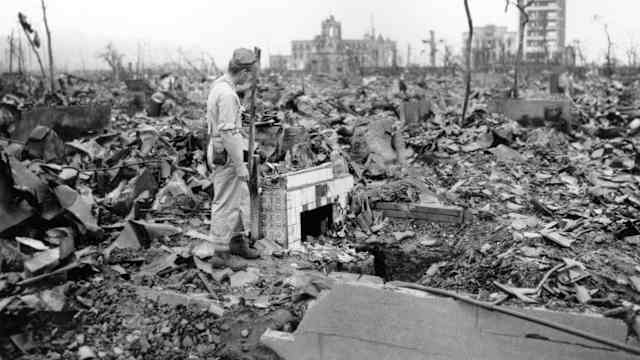Not all American citizens were allowed to retain their independence during World War II. Just over two months after Pearl Harbor, U.S. President Franklin D. Roosevelt (1882-1945) signed into law Executive Order 9066, which resulted in the removal from their communities and the subsequent internment of all Americans of Japanese descent who resided on the West Coast.
Executive Order 9066 was the result of wartime panic and the belief on the part of some that anyone of Japanese ancestry, even those who were born in the United States, was somehow capable of disloyalty and treachery. As a result of the order, nearly 120,000 Japanese Americans were dispatched to makeshift Japanese internment camps.
Despite the internment of their family members, young Japanese-American men fought bravely in Italy, France and Germany between 1943 and 1945 as members of the U.S. Army’s 100th Battalion, 442nd Infantry. By the end of the war, the 100th had become the most decorated combat unit of its size in U.S. Army history.
Opportunities for Black Americans
African Americans also served honorably in World War II, though they were initially denied entry into the Air Corps or the Marine Corps, and could enlist only in the all-Black messmen’s branch of the U.S. Navy.
Nonetheless, many African Americans benefited from the increased employment opportunities available during the war. And with their newfound social standing came a new sense of pride—and assertiveness.
The Pittsburgh Courier, a Black newspaper, promoted a “Double V” campaign: V for victory in the war abroad, and another V for victory in the efforts to end segregation at home. Responding to these and other protests, Roosevelt signed an executive order creating a Fair Employment Practices Committee (FEPC) to investigate discrimination complaints.
Eventually, some Black airmen were permitted to fly, and racial segregation eased somewhat, but true equality for Blacks was denied. A Black soldier who was turned away from a lunchroom in Salina, Kansas, saw German prisoners of war being served. “The people of Salina would serve these enemy soldiers and turn away Black American GIs,” he lamented.
Baseball and the Battlefield
In January 1942, Kenesaw Mountain Landis, the national commissioner of baseball, wrote a letter to President Roosevelt in which he asked if professional baseball should shut down for the duration of the war. In what came to be known as the “green light” letter, Roosevelt responded that professional baseball should continue operations, as it was good for the country’s collective morale and would serve as a needed diversion.
During the war, 95 percent of all professional baseball players who donned major league uniforms during the 1941 season were directly involved in the conflict. Future Hall of Famers Bob Feller, Hank Greenberg, Joe DiMaggio and Ted Williams traded their baseball jerseys for military fatigues.
Feller, in fact, enlisted in the U.S. Navy one day after Pearl Harbor. Because baseball was depleted of so many able bodies, athletes who otherwise likely never would have made the big leagues won spots on rosters. One of the more notable was Pete Gray, a one-armed outfielder who appeared in 77 games for the St. Louis Browns in 1945.











































